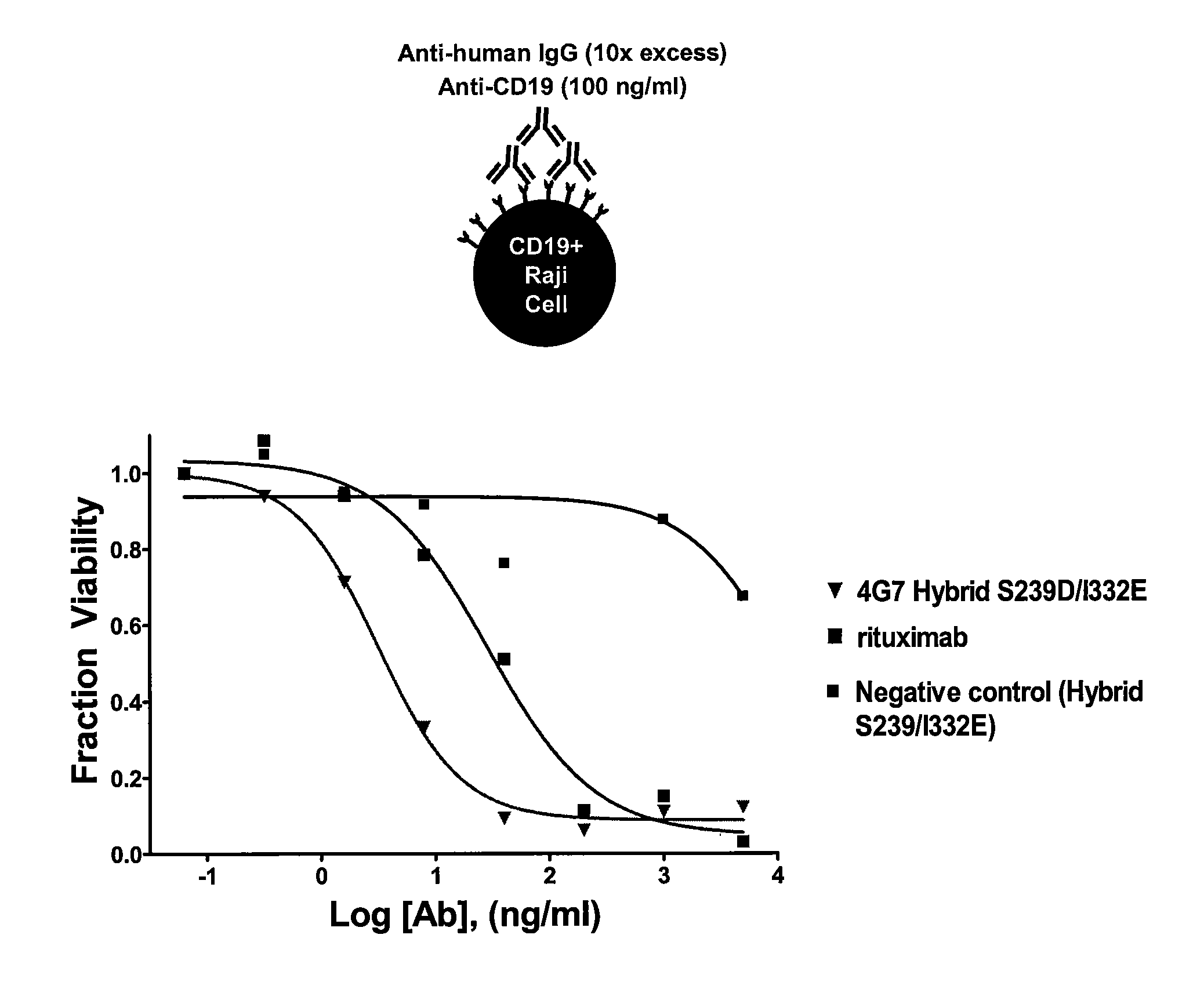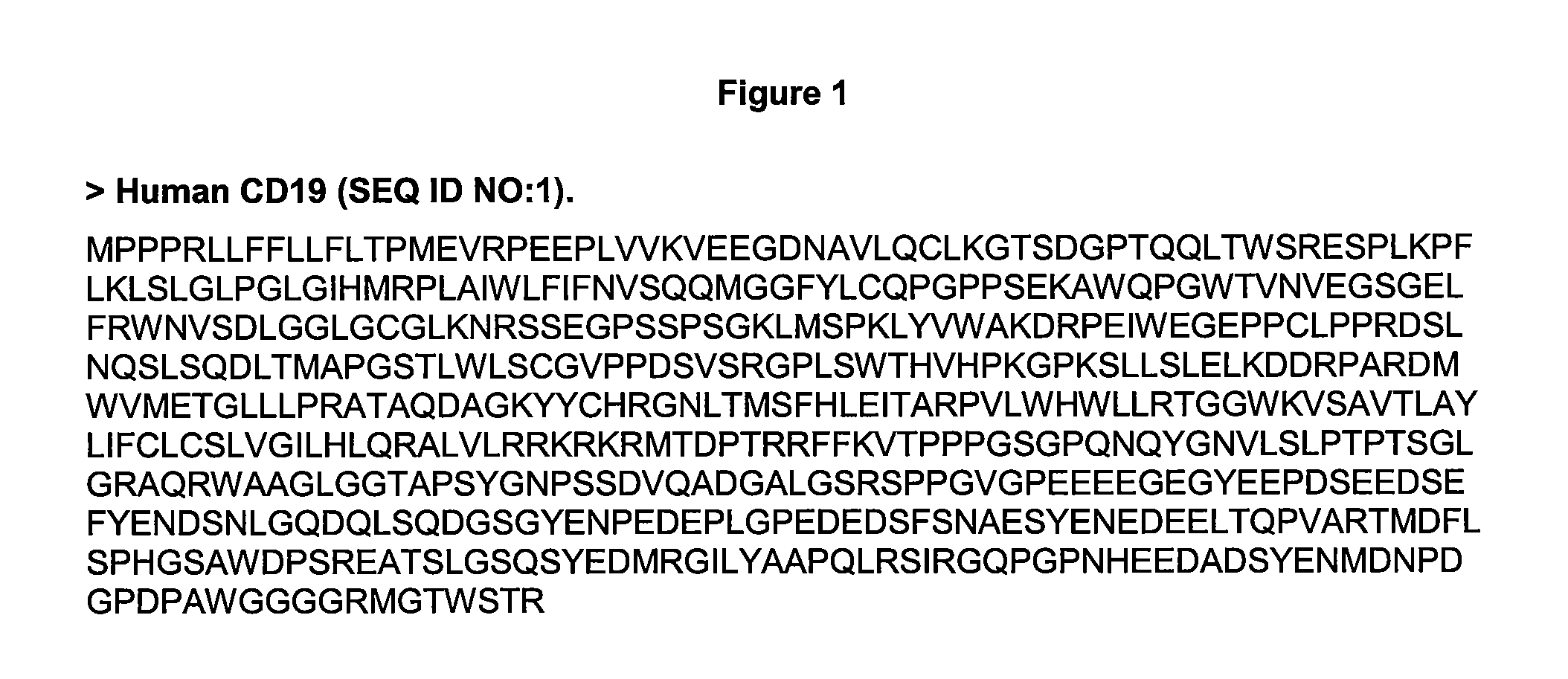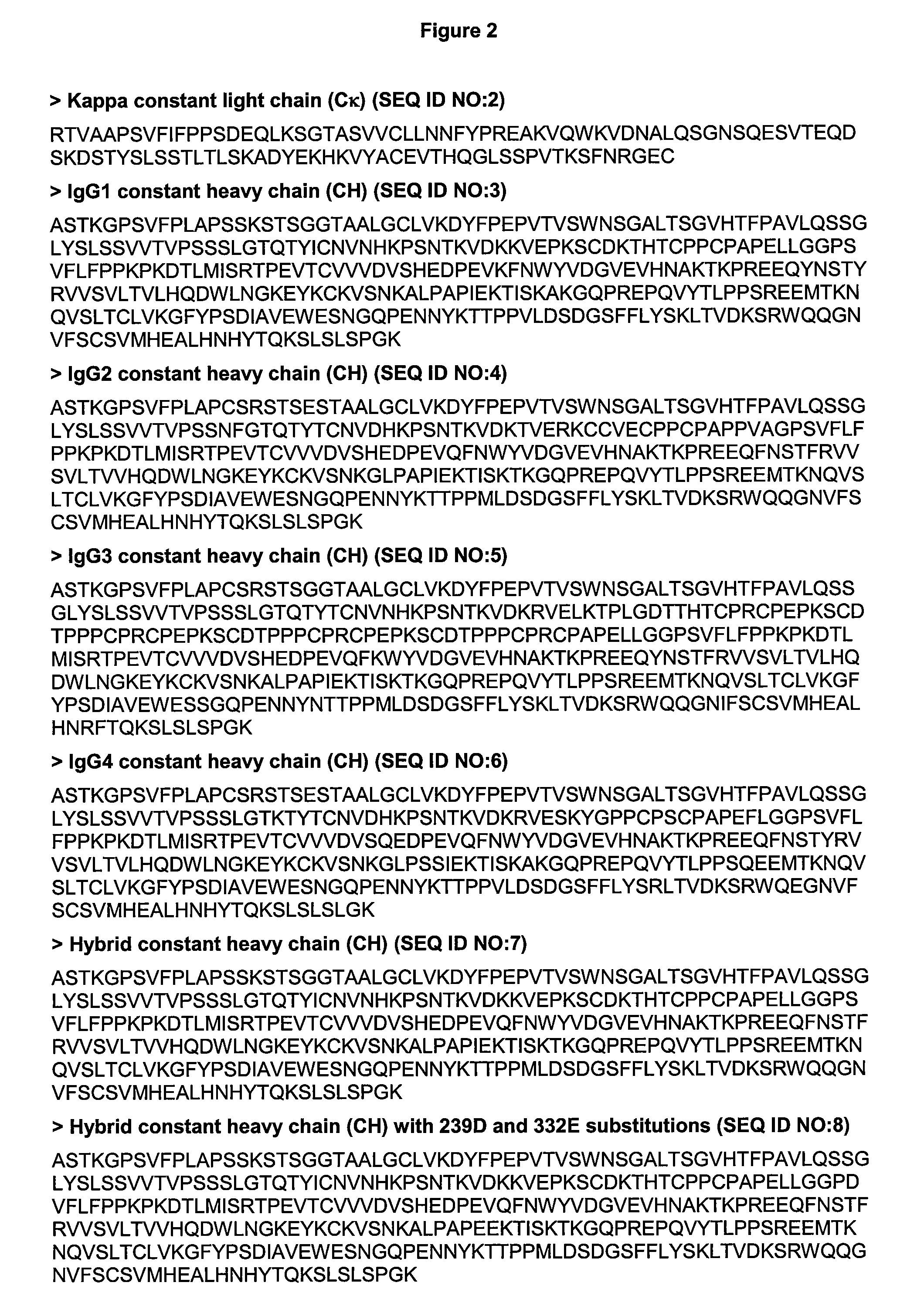Optimized Antibodies that Target CD19
a technology of cd19 and monoclonal antibodies, applied in antibody medical ingredients, immunological disorders, extracellular fluid disorders, etc., can solve the problems of limited use, significant limitations of anti-cd20 monoclonal antibodies (mabs), and inability to improve survival, etc., to achieve the effect of reducing the binding of fcriib
- Summary
- Abstract
- Description
- Claims
- Application Information
AI Technical Summary
Benefits of technology
Problems solved by technology
Method used
Image
Examples
example 1
Anti-CD19 Antibodies with Amino Acid Modifications that Enhance Effector Function
[0283]The anti-CD19 antibodies of the invention are intended as clinical candidates for anti-cancer therapeutics. To investigate the possibility of improving the effector function of an antibody that targets CD19, variant versions of anti-CD19 antibodies were engineered.
[0284]FIG. 6 provides some heavy and light chain variable region sequences of the anti-CD19 antibodies 4G7 (Meeker, T. C. et al. 1984. Hybridoma. 3: 305-320) and HD37 (Pezzuto, A. et al. 1987. J. Immunol. 138: 2793-2799) used in the present study. The mouse, parent chimeric heavy and light chains are labeled H0 4G7, H0 HD37, L0 4G7, and L0 HD37 respectively. Variants of the present invention could also be made in the context of the anti-CD19 antibody B43 (Uckun, F. M. et al. 1998. Blood. 71: 13-29) which has similar properties to HD37 and shares identical CDRs and an overall 97% sequence identity relative to the HD37 H0 and L0 sequences ...
example 2
Binding of an Effector Function Enhanced Anti-CD19 Antibody to a B-Cell Derived Tumor Cell Line
[0288]The relative binding of 4G7 Hybrid S239D / I332E to the Raji cell line was measured. Affinities of enhanced effector function anti-CD19 variants were determined by using the DELFIA® system (PerkinElmer Life Sciences) which is based on Time-Resolved Fluorometry (TRF). Anti-CD19 (H0L0) is labeled with Europium using the Eu-Labeling kit available from PerkinElmer Biosciences. Unlabeled wild-type (WT) or variants (cold) are serially diluted (typically starting from 1 uM) in ½ log steps and mixed with a fixed concentration of labeled (or hot) anti-CD19. The mix of “hot” and “cold” antibodies are then added to 100,000 Raji Cells (that have a high density of surface expressed CD-19 antigen) and incubated on ice for 30 min. The assay is essentially applied as a competition assay for screening anti-CD19 antibodies of different affinities. In the absence of competing affinity variants, Eu-anti-C...
example 3
ADCC of an Anti-CD19 Antibody with Enhanced Cytotoxicity Against Multiple Lymphoma Cell Lines
[0289]In order to evaluate cytotoxic properties of effector function enhanced anti-CD19, ADCC assays were performed on a panel of 14 cell lines representing various lymphomas and leukemias (FIG. 10a). Cell lines tested were the Follicular Lymphoma (FL) cell lines DoHH-2 and SC1; Mantle Cell Lymphoma (MCL) cell line Jeko-1; Burkitt's Lymphoma (BL) cell lines Daudi and Raji; Chronic Lymphocytic Leukemia (CLL) cell lines MEC1 and WaC3CD5; Hairy Cell Leukemia (HCL) cell line Bonna-12; Chronic Myelogenous Leukemia (CML) cell line BV-173; and Acute Lymphoblastic Leukemia (ALL) cell lines VAL, SUP-B15, NALM-6, RS4;11, and 697. Human peripheral blood monocytes (PBMCs) were isolated from leukopaks and used as effector cells, and CD19 positive cancer cells were used as target cells. Target cells were seeded in 96-well plates and treated with designated antibodies in triplicate. PBMCs isolated using a ...
PUM
| Property | Measurement | Unit |
|---|---|---|
| concentrations | aaaaa | aaaaa |
| length | aaaaa | aaaaa |
| molecular weight | aaaaa | aaaaa |
Abstract
Description
Claims
Application Information
 Login to View More
Login to View More - R&D
- Intellectual Property
- Life Sciences
- Materials
- Tech Scout
- Unparalleled Data Quality
- Higher Quality Content
- 60% Fewer Hallucinations
Browse by: Latest US Patents, China's latest patents, Technical Efficacy Thesaurus, Application Domain, Technology Topic, Popular Technical Reports.
© 2025 PatSnap. All rights reserved.Legal|Privacy policy|Modern Slavery Act Transparency Statement|Sitemap|About US| Contact US: help@patsnap.com



